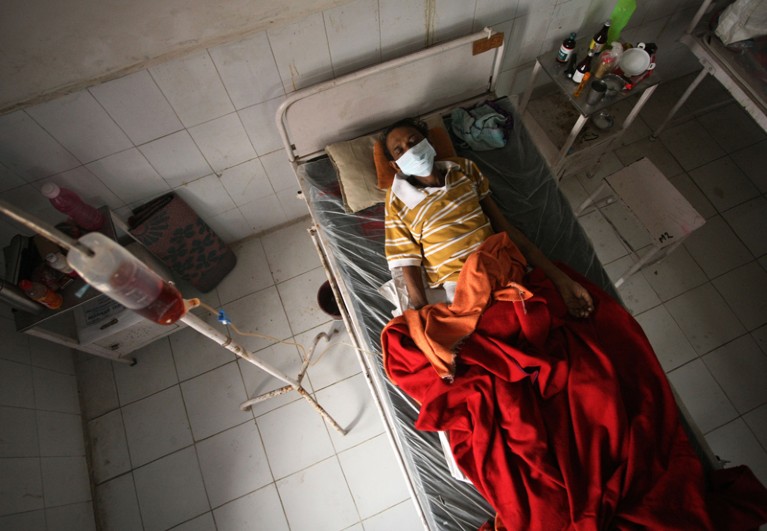
India has the world’s highest burden of tuberculosis.Credit: Ritesh Shukla/NurPhoto/Getty
For many people, the money that flows from the Global Fund to Fight AIDS, Tuberculosis and Malaria quite literally makes the difference between life and death. The fund is estimated to have saved 50 million lives in low- and middle-income countries in the two decades since it was established by the leaders of the international community, researchers and philanthropic funders. A conference held last month to replenish the fund received US$14.25 billion in pledges from donors — a record, although still considerably short of the $18-billion target.
Before the pandemic, the annual death toll from malaria, AIDS and tuberculosis (TB) was around 2.4 million. But there are fears that this number might since have risen, owing to the diversion of resources to treat COVID-19, and difficulties people faced in accessing treatment during lockdowns.
Despite these challenges, the Global Fund continued its work. In 2021, it provided more than 23 million people with antiretroviral therapy, treated over 5 million people for TB and distributed some 133 million insecticide-treated mosquito bed nets to protect against malaria.
Lifesaving fund to fight AIDS, malaria and TB falls short of $18-billion target
A pandemic, climate change and escalating global instability all offer a perfect opportunity for infectious diseases to resurge. But the Global Fund says that if it can reach its current target, another 20 million lives could be saved and 450 million infections could be averted over the next 3 years. On top of that, six countries could eliminate malaria by 2026.
Most existing governmental donors (and some new ones) have stepped up with pledges for the latest funding round, covering 2023–25. Many pledges are 20–30% higher than those made during the previous round, which covered 2020–22. France has said it will donate $1.59 billion, Germany $1.29 billion, Japan $1.08 billion, Canada $904 million and the European Commission $710 million. The United States, the fund’s largest donor, has so far pledged $6 billion. At last month’s conference, US President Joe Biden pledged to donate $1 billion for every $2 billion that the fund receives from elsewhere. Among philanthropic donors, the Bill & Melinda Gates Foundation is pledging $912 million. But the funder list contains two notable omissions: Italy and the United Kingdom.
In the last funding round, the United Kingdom pledged $1.7 billion and Italy $178 million. If both countries were to commit these same amounts — and ideally more, to match the increased commitments made by others — that could potentially unlock more from the United States, bringing the fund considerably closer to its target.
Both Italy and the United Kingdom are going through political transitions, a factor that is delaying spending decisions. Last month, Italy elected a new government and the United Kingdom changed its prime minister. The two countries have just a few weeks to confirm their support, and the Global Fund has said in a statement that it is assured of the United Kingdom’s commitment. Both countries need to state their intentions clearly, and quickly. We know from the experience of high-income countries that AIDS, malaria and TB can be controlled or eliminated.
Twenty years ago, the international community took the bold step of helping to establish the Global Fund to eliminate these diseases from the world. Now is not the time to go slow.

 Lifesaving fund to fight AIDS, malaria and TB falls short of $18-billion target
Lifesaving fund to fight AIDS, malaria and TB falls short of $18-billion target
 Ater COVID, African countries vow to take the fight to malaria
Ater COVID, African countries vow to take the fight to malaria
 Long-lasting HIV prevention drug could be game changer — but who will pay?
Long-lasting HIV prevention drug could be game changer — but who will pay?
 The COVID pandemic must lead to tuberculosis vaccines
The COVID pandemic must lead to tuberculosis vaccines
 How to stop COVID-19 fuelling a resurgence of AIDS, malaria and tuberculosis
How to stop COVID-19 fuelling a resurgence of AIDS, malaria and tuberculosis







